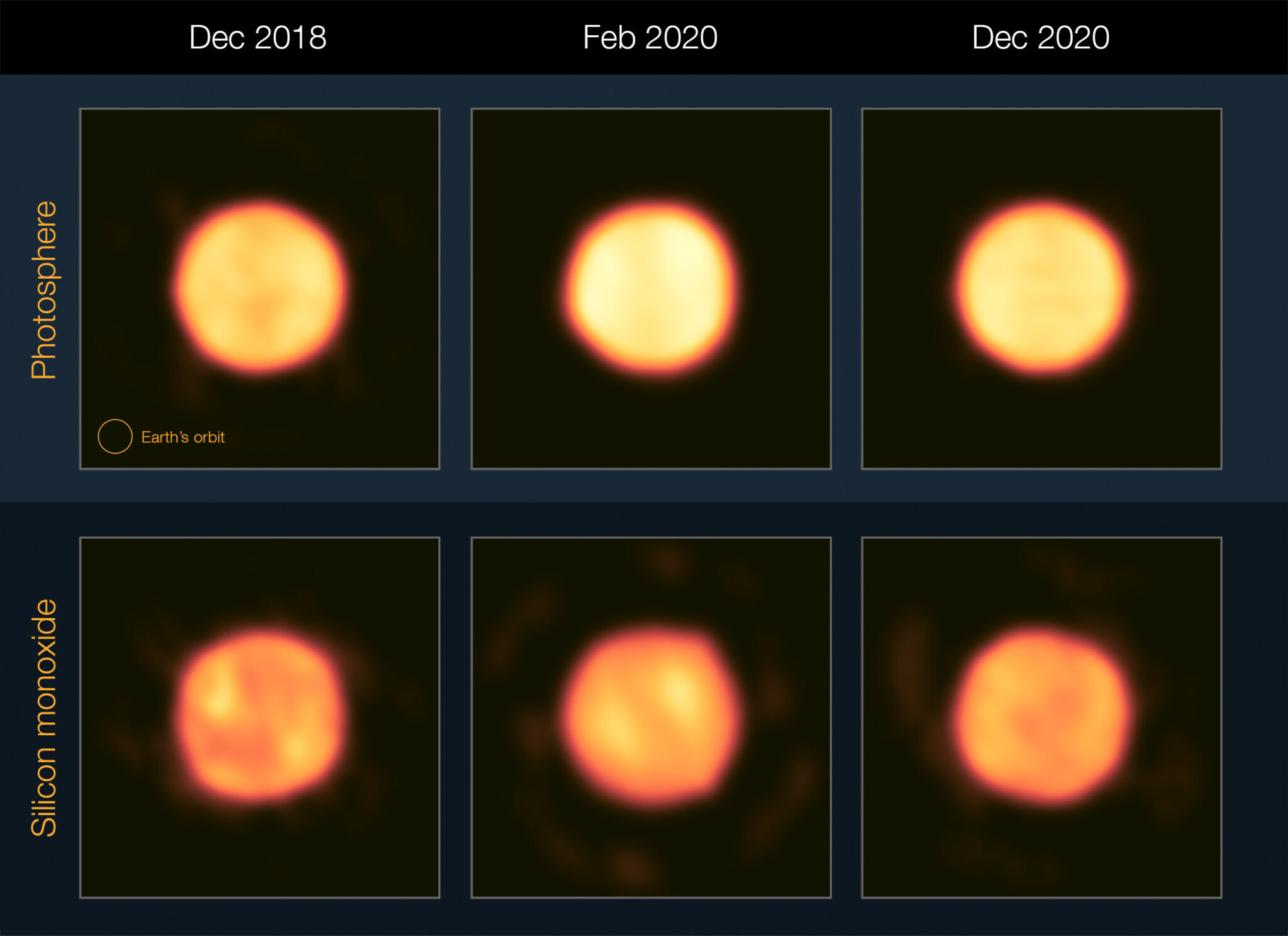The European Southern Observatory has published a series of images obtained using the Very Large Telescope Interferometer (VLTI). They demonstrate the Great Dimming Event of Betelgeuse.

The Great Dimming Event of Betelgeuse was observed in late 2019 – early 2020, when the red supergiant star dimmed noticeably, which puzzled the whole world. Some even believed that the luminary, whose life was coming to an end, was about to explode and turn into a supernova. However, then Betelgeuse stopped dimming and restored its usual brightness.
The presented collage is made up of images of Betelgeuse taken in December 2018, February 2020 and December 2020 — that is, before, during, and after dimming. They were made using the MATISSE infrared instrument installed on the VLTI. The upper images show the visible surface of the star (photosphere), and the lower ones show silicon monoxide, a molecule of which can serve as the basis for the formation of dust grains.
It is easy to notice that in the pictures, Betelgeuse’s photosphere looks noticeably brighter during dimming. This apparent paradox is due to the fact that this event was accompanied by the formation of a large amount of dust. As a result, the star began to look much dimmer to the human eye, but much brighter to MATISSE, because the dust glows in the infrared range. Changes in the structure of the photosphere and the distribution of silicon monoxide are consistent with both the formation of a cold spot on the surface of the star and the emission of a dust cloud.
It is worth noting that the apparent size of Betelgeuse in the sky is comparable to a one-euro coin observed from a distance of 100 km. It may seem that with such introductory tasks, the task of seeing some details on the surface of the star is almost impossible. However, VLTI combines the light of several telescopes, creating a much larger “virtual” telescope that allows distinguishing small structures on Betelgeuse. Thanks to this, we can observe in detail how this massive star ages and evolves and how it will turn into a supernova in the future.
Earlier we talked about how a giant star miraculously disappeared.
According to https://www.eso.org
Follow us on Twitter to get the most interesting space news in time
https://twitter.com/ust_magazine


